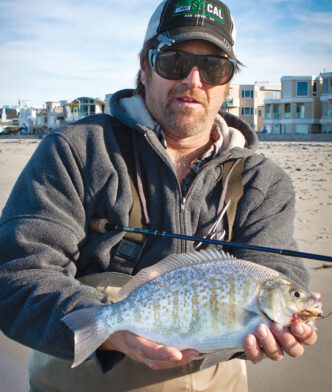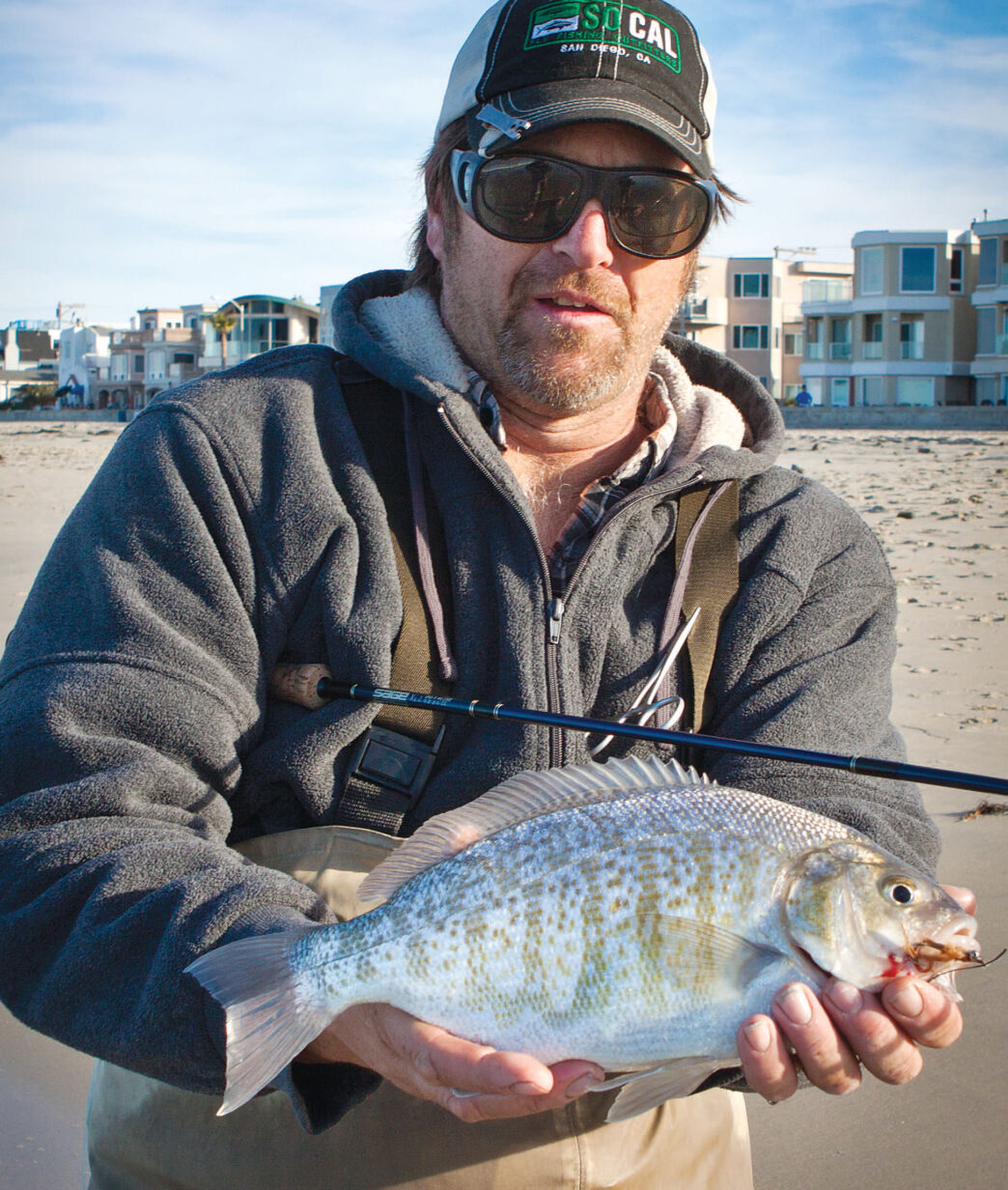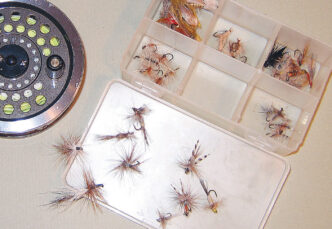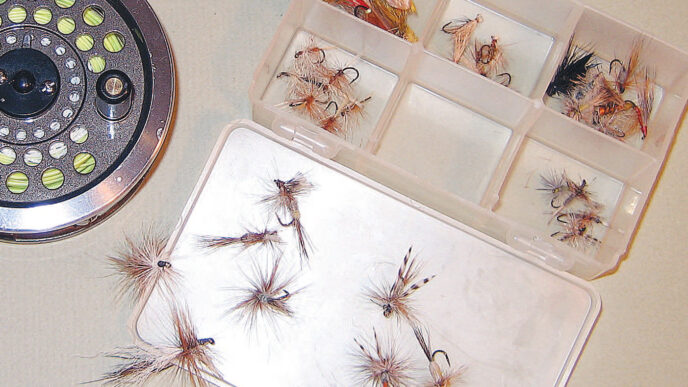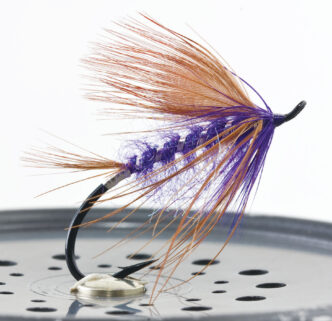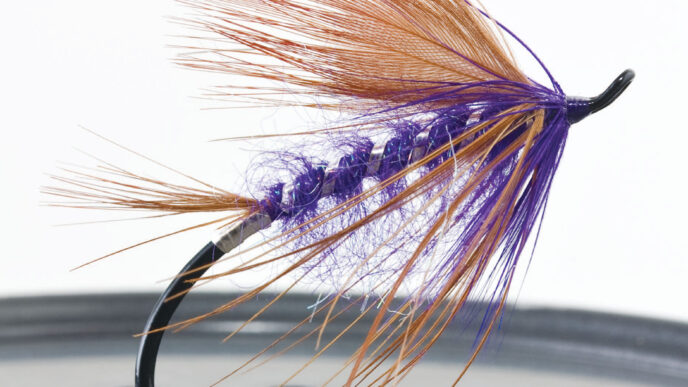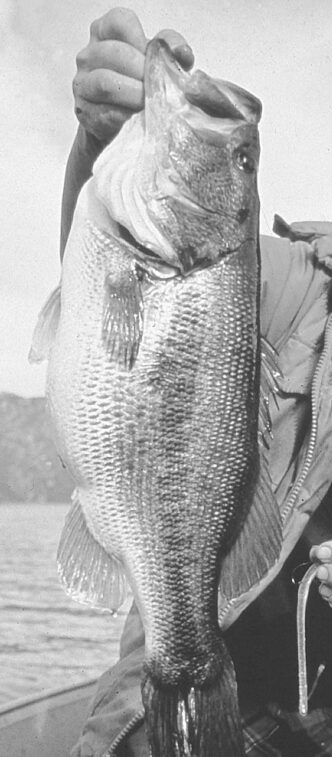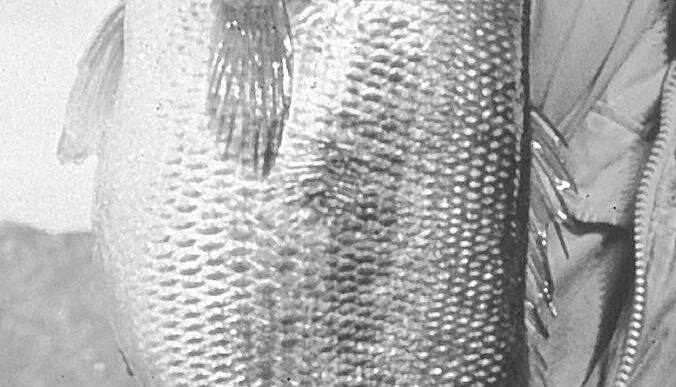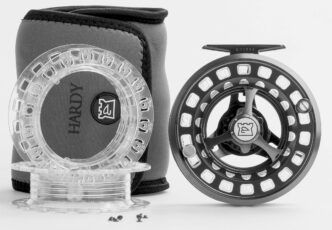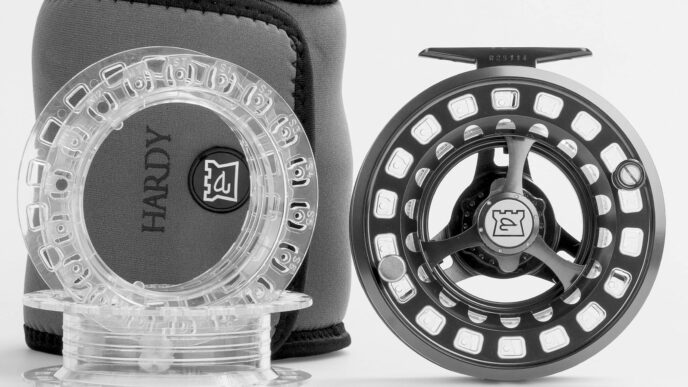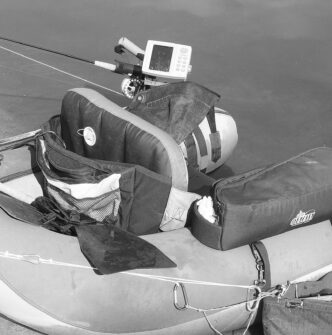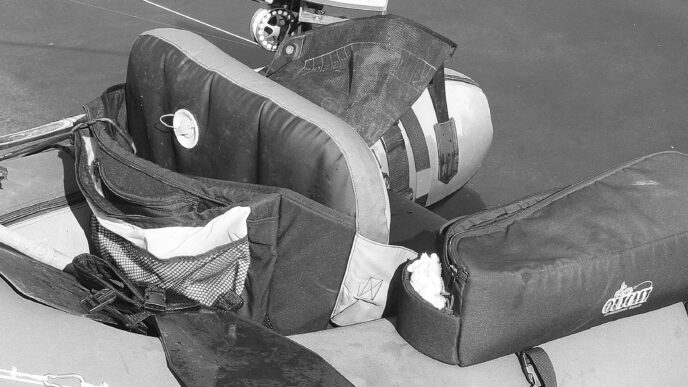I’m not exactly sure what draws me to the surf, fly rod in hand. Maybe it’s the power of the fish. Saltwater fish just seem to pull harder than most of their freshwater cousins. Or perhaps it’s the beauty of the beach itself, with crashing waves always changing in size and shape, and continuing to break, seemingly until the end of time. Then there are the sunrises and sunsets, which seem to improve on a daily basis, and of course, the vistas up and down all that sand. It’s not surprising that so many people flock to the coastline on most weekends to enjoy this treasure and why people pay millions of dollars for beachfront property.
As beautiful as the beach is, I have friends who are too intimidated to fish this tumultuous scene. And understandably so — the surf zone can be very frightening. That’s true even here in Southern California, let alone in the harsher conditions of the Northern California coast. However, once beginners in the surf learn the correct methods and techniques to have success in this harsh setting, they often realize that the beach isn’t as difficult or as threatening to fish as they originally thought. As in most things, the more time and energy one invests, the better and more successful one will be. Time on the water is critical if you want to succeed at the surf-fishing game. And be sure to pay a visit your local fly shop for up-to-date information and local knowledge. You can’t beat getting good information from fly fishers who have been on the water recently.
The Fish
The most abundant fish in the California surf zone is the barred surfperch. Superficially, they resemble freshwater panfish and are often referred to as a “bluegills on steroids.” The average surfperch is about the size of your hand, but big surfperch the size of dinner plates, 14 to 16 inches, are not uncommon. Such Leviathan perch pull harder than almost any fish found at the beach, and in Southern California it is quite normal to hook a dozen or more in a short morning or evening session of fishing. These scrappy fish are caught year-round from the late fall, throughout the entire winter, and into the spring,
One of the coolest fish you’ll likely tangle with while fishing the SoCal surf is the California corbina, our West Coast version of a redfish or bonefish. This slim, stealthy fish resides near shore and travels up and down the beaches in small schools, searching for food. The mouth of the corbina is low on its jaw, which enables
this fish to feed on the sandy bottom with ease. It also has a barbel on the bottom of its chin, a protrusion of cartilage that acts as a “feeler.” This barbel is used to locate mole crabs and tiny morsels that have nestled in the sand. Corbinas are members of the croaker family and can be caught year round, but show in greater numbers during the summer months. These hard fighting fish average 18 to 20 inches long, but during the summer, corbinas over 25 inches and weighing close to five pounds are caught.
Other fish you’ll encounter in the surf are walleye surfperch, which are similar in appearance to barred surfperch, but are smaller and more silvery, with large eyes, and California halibut, a smaller version of the Pacific halibut. These “flatties,” as the locals call them, burrow in the sand and wait to ambush small prey that swims above them. The hard-fighting yellowfin croaker and spotfin croaker can also be found throughout the year in the SoCal surf zone, and if you have the opportunity to fish near rock outcroppings or jetties, you might come across calico bass and spotted bay bass.
Tackle
The constant crashing of waves into the California coastline and the power of these waves shape the beaches we see today. Sometimes this saltwater environment can get downright nasty, with large breaking waves pounding the sand. This relentless beating churns up a continuous smorgasbord of chow for the finny residents of the surf zone. Predatory fish interested in the groceries produced in this tumultuous environment must be highly adept at navigating and surviving in what seems like chaos. As in a trout stream, however, most of the turbulence in the surf is near the water’s surface. The fish consequently prefer to stay near the bottom, chasing unwary prey and devouring morsels washed about by the waves.
The demands of the surf environment require fly tackle that is suited to the situation. Because of the intense hydraulics in the surf zone, anglers must make sure their flies are reaching the bottom, where the fish live and feed. Fast-sinking shooting heads are ideally suited to accomplishing this end. I prefer heads weighing 200 to 250 grains. In San Diego, where I tend to fish most often, beaches mostly slope gently, which means shallower water and a less turbulent setting. A 200-grain or 250-grain head gets the fly down to where the fish are just fine. However, farther north along the coast, near Los Angeles, the beaches tend to be much steeper, which means bigger waves creating more havoc. I then try a heavier head, weighing 300 or 350 grains. As for leaders, keep them simple and short — 5 to 6 feet tapering down to 15 inches of 6-pound-test to 8-pound-test fluorocarbon tippet material. The fluorocarbon is highly abrasion resistant and less visible than standard monofilament.
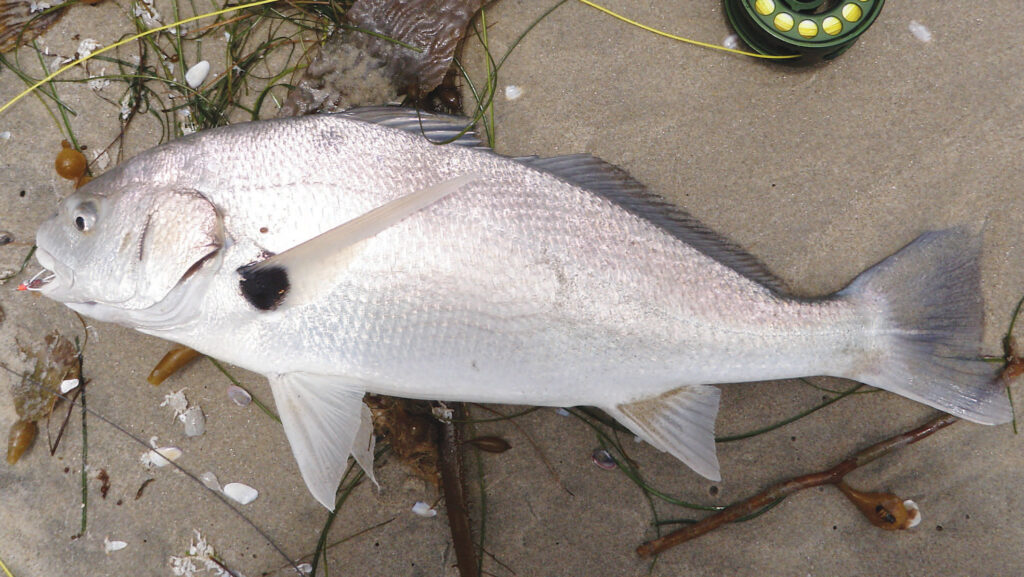
During the winter and spring, when barred surfperch are my primary target, I fish a 9-foot 5-weight or 6-weight rod, because such light tackle brings out the best in these tenacious little fish. If I’m throwing heavier sinking fly lines and battling wind, which can be the norm on the beach in December and January, a 7-weight or 8-weight rod is a better choice.
In all circumstances, surf-zone fly fishers should choose anodized reels with strong disc drags. Anodizing make the reels largely impervious to saltwater corrosion, but because sand, grit, and salt tend to invade just about every possible nook and cranny in tackle used in the surf zone, be sure to thoroughly rinse all gear — including flies — with fresh water at the end of each trip. Most of the fish that live in the surf are highly opportunistic feeders. Surfperch are especially eager to take a fly. With all of the complex currents and hydraulics, the fish have little time to scrutinize food and flies. Matching the hatch, so to speak, is not necessary in this environment. Instead, use impressionistic flies. Bonefish-style flies are always effective — they are the proper size and generally resemble the critters in the sand. Size 4 and 6 Foxy Clouser Minnows, Beck’s Sili Legs, Clouser Darters, Crazy Charlies, and Gotchas rank among my favorite patterns.
Clothing
Staying warm and comfortable is essential when fishing the beach, especially during the cooler months from the fall through the spring. From my experience, breathable waders work best. The amount and type of layered clothing you wear under your waders depends on the weather and the water temperature. For footwear, flats-type booties or wading boots with Vibram soles are the key. Leave your felt soled boots at home: sand and grit will work their way in between the sole and the felt, causing them to separate.
A waterproof jacket is critical. Regardless of the weather, surf anglers are constantly battered by salt spray from the breaking waves. A waterproof, breathable jacket will keep you dry and fishing longer. By the way, if temperatures require that you wear waders, also wear a non-stretchable wading belt; it will slow the speed at which water enters your waders if you get knocked down by a wave. The surf zone is a dangerous place, so always keep an eye on the waves as they come in.
Other essential equipment includes a pair of polarized sunglasses, a stripping basket for managing the fly line, and a chest pack for holding fly boxes, hemostats, leaders, tippet material, and a hook sharpener.
Technique
One of the biggest challenges when beginning to fish the beach is knowing where to focus your efforts. Reading the surf is like reading a trout stream: the basic strategy is to decipher the shape and structure of the bottom by watching the water’s surface. Like a trout stream, the beach contains cuts, holes, troughs, pockets, and seams where one or more currents converge. These places are all likely to hold fish, and particular surface actions and configurations reveal their presence.
Learning to recognize the reactions of waves as they move toward the shore is critical. Waves build as they approach the beach, and as the water gets shallow, the waves begin to break. But when passing over depressions in the sand, waves gently roll over the slightly deeper area, rather than break. These deeper areas come in many shapes and sizes. Not only does bait congregate and get washed into them, but the deeper water also provides shelter for the fish from the turbulence of the surf.
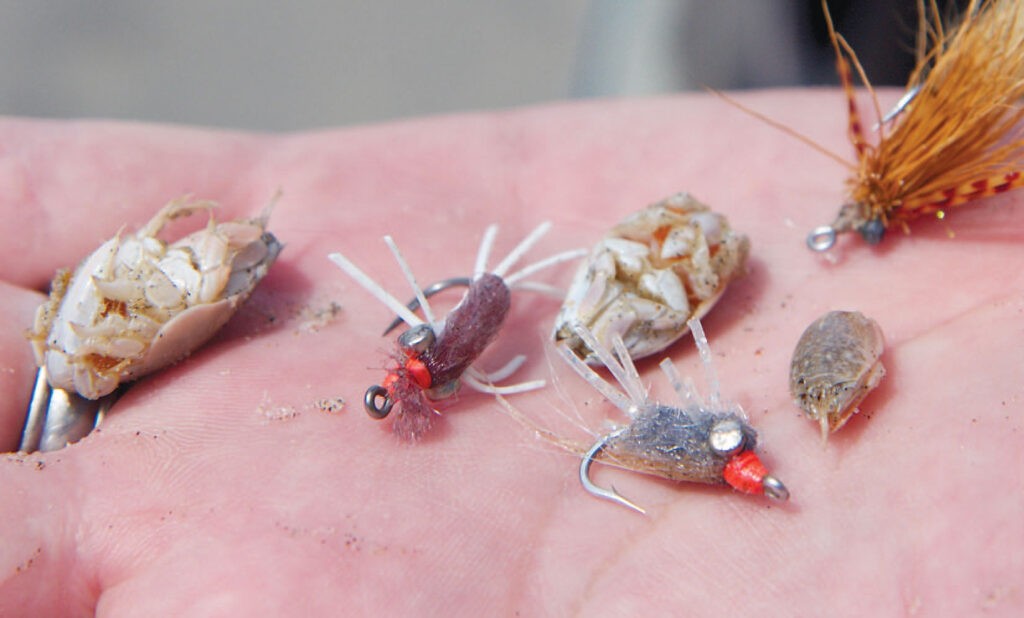
As a general rule, I wade about knee deep and concentrate my fishing in such depressions. However, the water level where you’re wading constantly increases and decreases: one moment you are standing knee deep, and the next you are in over your waist. A moment later, the water is barely at your ankles. Because of the ever changing depth of the surf, anglers must constantly move forward and backward while wading to maintain position in that prime, knee-deep water.
From knee-deep water, wait for the next wave to break and for the wall of crashing white water to pass, then cast into the slow-moving, foamy flat water behind the break. I call this “fishing the foam.” Pause a few seconds after making your cast to allow your fly to sink. The sinking line will take the fly down into the zone. The retrieve is a sequence of three or four short, quick strips, followed by a brief pause, then repeated until a fish takes the fly. Fish often hit the fly during the pauses in the retrieve as the fly drops, imitating a fleeing crab or other crustacean. Each cast must be timed perfectly. Cast too soon, and the tumbling wall of white water engulfs your flyline and drags it toward the beach. Cast too late, and the receding water causes the fly to drag against the current sucking back out to sea, creating an unnatural presentation. Remember to fish the foam, keep a tight line to detect strikes, and be prepared for jolting takes. One of the beauties of fishing the surf is that any fish able to survive in this habitat must be one tough opponent.



